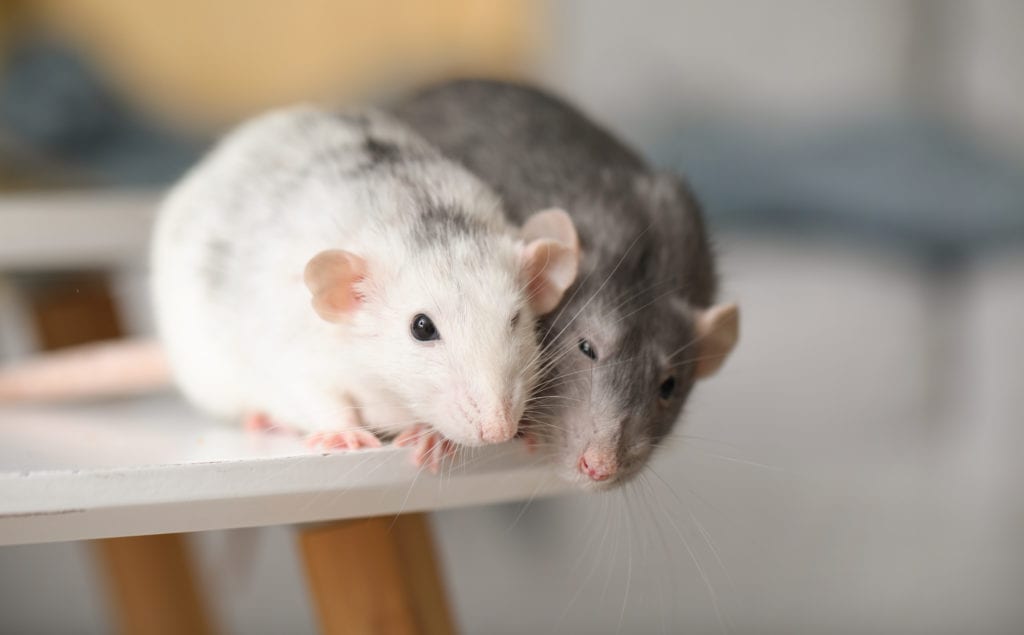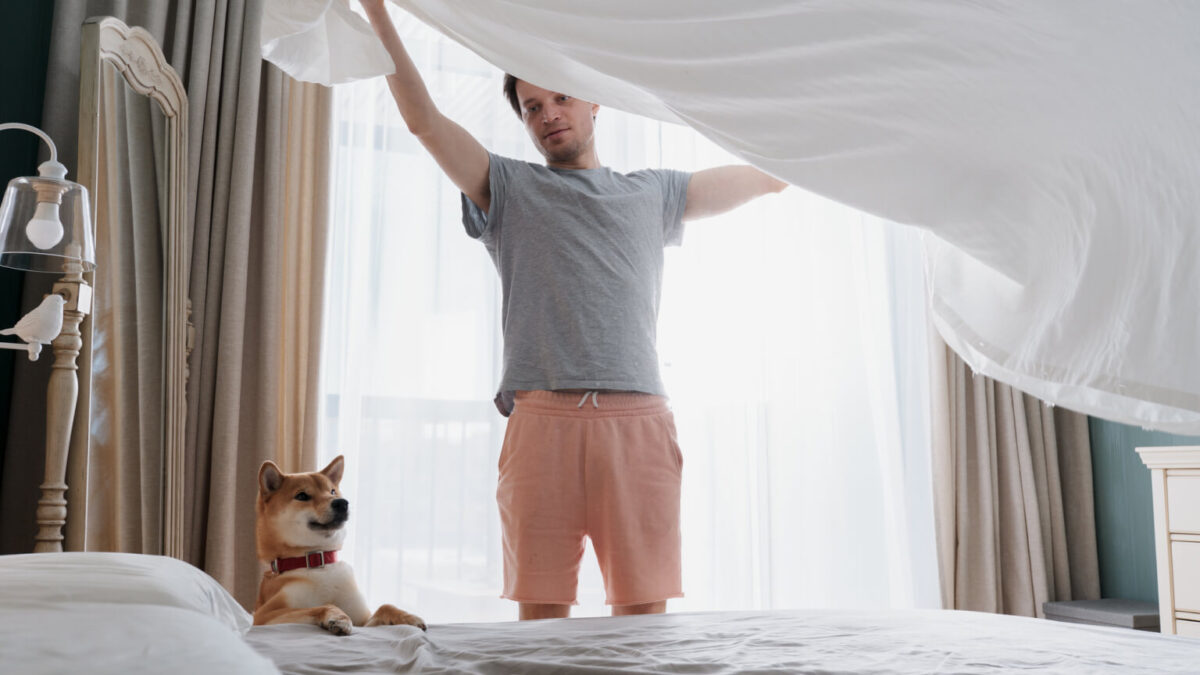How to Get Rid of Mice in 5 Steps

Nobody wants a mouse in the house. Mice are persistent and will keep coming back if you don’t do something to get rid of them for good. They don’t just chew through boxes or eat what’s in your pantry – they bring with them serious health hazards and risks for your home. But we’ve got your back. Read on to find out everything you need to know about how to get rid of mice.
What attracts mice?
Mice are always on the lookout for safe hiding place with easy access to food and water. When the temperature drops during the fall, you may not be the only one appreciating your new warm and cozy home. The messier and more cluttered a home the better, so if you haven’t finished unpacking from a recent move, avoiding a mouse infestation (and the slew of sometimes lethal diseases that go with it) is good motivation to start.
An attic or garage filled with old newspapers, worn blankets, and furniture makes the perfect mouse nest. So, too, do those moving boxes sitting in an undisturbed corner of your home. Leaving a garage door, windows, or other doors open as temperatures dip also increases the risk of becoming an easy mouse access point.
One mouse in the house can quickly turn into an infestation. With short pregnancies of 19 to 21 days and the fact that female house mice can birth up to 14 litters a year, those numbers multiply fast.
What do mouse droppings look like?
If you see something similar to dark-colored rice in random places in your home, you may have a mouse in your house. Mice defecate often and have small feces that may have a slight sheen or glisten and are usually black in color. Mouse droppings gray with age, so if you find hard, crumbly, gray droppings, you’ve found the area where a mouse used to live.
How to check for mice in your home
If you haven’t seen mouse droppings, a nest, or the actual rodent yet, but are concerned you have mice in the house, it pays to take a closer look around your home. Mice love those rarely used kitchen cabinets or places like under the sink, in the back of a pantry, and behind ovens are popular nesting sites because they provide fast access to food and water.
If you have seen mouse droppings, peek inside nearby boxes, inside and under furniture, and look for in-the-wall access points. Check your cable lines, wiring, and pipes for signs of mice entry, like gnawed up cords or mouse feces.
When mice walk around your home, they hug the walls, leaving behind a grease trail. This looks similar to smudged handprints on a painted surface. See if you can follow the trail to the nest. Or sprinkle flour near the areas where you suspect mice, so you can see where those little mouse footprints are heading.
How to get rid of mice, step by step
Mice are persistent. Once a mouse finds a place to live, the rodent lays down a mix of urine and pheromones, signaling to other mice that it’s got a good thing going on. Other mice, attracted by the scent, will make their way in, too. To end the cycle, and for how to get rid of mice in the walls and your house, follow the steps below.
Step 1: Walk the perimeter of your home.
Look for entry points like gaps caused by cable wires or pipes. Fill in holes with concrete and add rubber trim to your doors to keep more mice from squeezing in.
Step 2: Clean up your kitchen.
While cleaning the kitchen, be sure to remove potential mouse food sources. Store grains and cereals in mouse-proof containers, like glass or thick, durable plastic and bring food waste outside each night.
Step 3: Set traps.
You can choose from no-kill traps or lethal snap traps. Set the traps near places frequented by your unwanted guests, such as near holes or gaps in walls, but away from pets and kids. Peanut butter or hazelnut spread, not cheese, is the best mouse trap bait because mice can’t swipe the bait easily and avoid the trap.
Step 4: Check mouse traps often.
Dispose of the bodies in your trash can or relocate live mice at least 100 feet from your home
Step 5: Know when it’s time for professional help.
If your traps aren’t working or you’re still hearing signs of multiple mice in your house, it’s okay to send for reinforcements. An exterminator will find your mice nests and know how to get rid of mice fast.
Products you’ll need to treat a mice infestation
- Authenzo Humane Mouse Trap: The spring door catches mice, so you can easily catch and release any mice back into the wild.
- Odesos Mouse Trap, Live Catch and Release Bucket: Pair this multi-catch device with bait and relocate the captured vermin.
- Tomcat Press ‘N Set Mouse Trap: Simple one-touch setup and easy disposal.
- Ultrasonic Pest Repeller: This electromagnetic and ultrasonic chip mouse repellent keeps mice and other pests, like mosquitoes, at bay by disorienting their hearing and driving them away .
- Victor Indoor Electronic Mouse Trap: One four-pack of AA batteries can kill up to 100 mice with instant high-voltage shock.
Home remedies and natural ways to get rid of mice
When you don’t want to fuss with traps, and killing mice isn’t an option for you, turn to home remedies or natural ways to deter them. To get the best results use more than one option.
Kitty litter is a home remedy you can use to deter mice. Keep mice from getting inside by sprinkling your cat’s kitty litter around the outside of your home. Mice will avoid the scent of a predator and seek safer ground.
Peppermint oil is a natural way to get rid of mice, too. Leave cotton balls soaked with the oil around areas where you suspect the rodents frequent to deter them from returning. Mice can’t stand the smell of this natural oil, as well as eucalyptus and spearmint. The rodents should eventually leave to avoid the scent of the oils.
Finally, give mice one less way in and use a vent cover on your chimney.
When to call a professional exterminator
It’s time to send in a professional exterminator if you see an increase in visible mouse evidence. Mice look alike, so it’s hard to tell if the mouse you saw running along your kitchen floor is the same mouse you saw the day before on your countertop. For peace of mind, and to avoid dealing with an even bigger (and more expensive problem later), send in a professional.
An exterminator will walk through your home, assess the situation, and provide different options. You’ll be able to decide how, and if, you want to proceed based on the exterminator’s recommendations on how to get rid of mice in the walls or around your home.
How to keep mice out of your home — for good
Once you’ve eliminated any indoor mice problems, preventing mice from creeping back into your home is easy. If you have an attached garage, keep the door closed and elevate your trash cans. Replace ripped window screens and add rubber or silicone trim to your doors to keep them airtight. Seal pipes, gas vents, and dryer vents so mice can’t squirm their way inside.
For a mouse-free interior, deep clean your kitchen. Crumbs are what attract mice, so wipe up spills and messes quickly and use airtight storage for pantry items. Nightly removal of food trash and staying on top of dirty dishes go a long way to keeping these pests out. A clean home without access to food will keep mice away.
The bottom line
Whether you choose catch-and-release traps, snap traps, peppermint oil, or to call an exterminator to do the dirty work, you have plenty of effective options for how to get rid of mice. Don’t ignore a mouse in your house. With the short breeding period of mice and large litters, one little mouse can easily turn into an infestation. Deal with your mouse problem from the start so you can enjoy a full night’s sleep without the sounds of skittering and scratching overhead.
Frequently Asked Questions
Are mice in the house dangerous?
They can be. Mice are known carriers of disease, like lethal hantavirus. Add in their love of gnawing wire, and that cute little mouse could end up starting a fire.
Does one mouse mean you have an infestation?
Maybe. Mice are hard to tell apart. If you notice increased scratching activity, see multiple mice, or find a large amount of feces, you may have an infestation.



